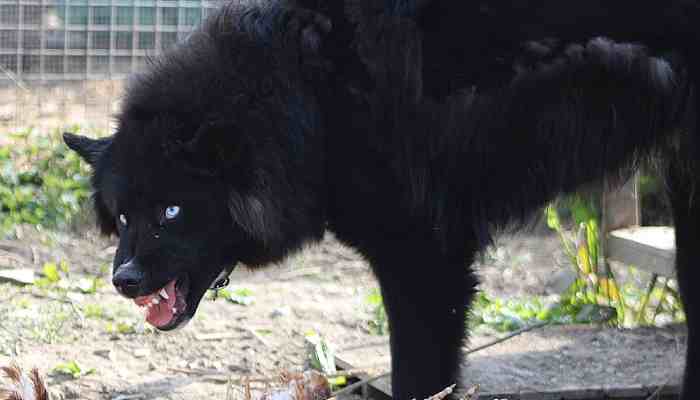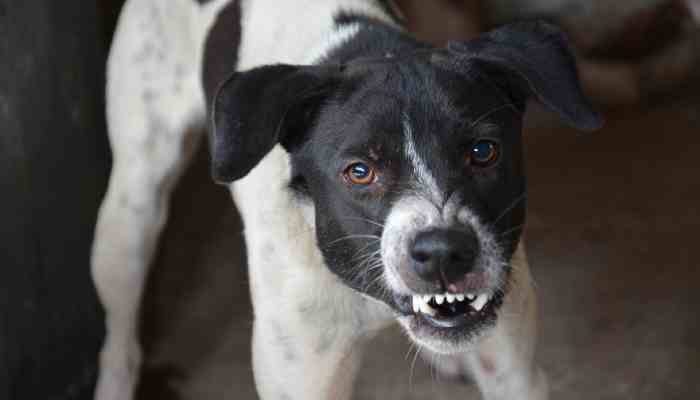Dog aggression is a complicated and frequently misinterpreted behaviour. Aggressive behaviour, whether it involves growling, biting, or snarling, can have detrimental effects on both the dog and the owner. But why does a dog behave in this way? Is it a result of your upbringing, your genes, or something else entirely? In this post, we’ll examine the most prevalent factors that lead to canine aggression and how they affect this problematic behaviour. We’ll unravel the secrets of why certain dogs behave aggressively and what can be done to help them, from socialisation and environment to genetics and health factors. So, let’s get to the bottom of canine aggression if you’re ready.
I. Environmental Factors
A dog’s upbringing and living conditions can have a significant impact on its behaviour and disposition, including how aggressive they are. Dogs’ development of aggressive behaviour can be influenced by a variety of environmental circumstances, including:
– Lack of socialization: Dogs are social animals and require exposure to a variety of people, animals, and environments in order to develop healthy social skills. A lack of socialization can lead to fear and anxiety in dogs, which can result in aggressive behaviour.
– Poor living conditions: Dogs that are kept in cramped, dirty, or otherwise unpleasant living conditions may become stressed and anxious, which can trigger aggressive behaviour.
– Overstimulation: Dogs that are constantly exposed to loud noises, bright lights, and other overstimulating stimuli can become overwhelmed and exhibit aggressive behaviour as a way to cope.
– Lack of physical and mental stimulation: Dogs that don’t receive enough exercise and mental stimulation can become bored and frustrated, which can lead to destructive or aggressive behaviour.
Poor management and handling: Improper handling and management of dogs, such as rough handling or punishment-based training, can cause dogs to become aggressive as a way to protect themselves.
It’s critical for dog owners to be aware of the environmental elements that can encourage aggressive behaviour in dogs and to make every effort to give their pets a secure, encouraging, and stimulating environment. Dog owners can prevent and manage aggressive behaviour by cultivating a pleasant environment, improving their dogs’ general health and wellbeing.
II. Genetics
Genetics play another significant part in the reasons of aggressive behaviour in pups. While a dog’s surroundings and upbringing can undoubtedly affect its behaviour, a dog’s temperament and amount of aggression can also be determined by heredity. Here are a few significant ways that canine aggression may be influenced by genetics:
– The role of breed: Certain dog breeds have a reputation for being more aggressive than others. For example, breeds like the Pit Bull, Dobermann Pinscher, and Rottweiler are often associated with aggressive behaviour. However, it’s important to note that individual dogs within these breeds can vary widely in their levels of aggression, and that other breeds can also display aggressive behaviour.
– Heritability of aggressive behaviour: Research has shown that aggressive behaviour in dogs can be heritable, meaning that it can be passed down from one generation to the next. This means that dogs with a family history of aggressive behaviour may be more likely to exhibit the same themselves.
– Importance of considering genetics in managing aggressive behaviour: When addressing aggressive behaviour in dogs, it’s important to consider the role of genetics. For example, a dog with a genetic predisposition to aggressive behaviour may require a different approach to training and management than a dog without such a predisposition.
While genetics can play a significant role in the development of aggressive behaviour in dogs, it’s important to remember that environment and upbringing can also have a significant impact.
III. Health Factors
Aggressive behaviour in dogs may occasionally be indicative of underlying medical conditions. Physical discomfort or pain may be among them, as well as neurological or hormonal disorders. The following are some significant ways that health conditions can encourage aggressive behaviour in dogs:
– Physical pain or discomfort: Dogs that are in pain or discomfort may become aggressive as a means of protecting themselves or communicating their distress. For example, a dog with a painful joint may become aggressive when touched in that area.
– Neurological issues: Certain neurological conditions, such as seizures, can also trigger aggressive behaviour. As a result of brain damage, dogs that have sustained head injuries may also exhibit aggressive behaviour.
– Hormonal imbalances: Another thing, such as those caused by conditions like hypothyroidism, can cause changes in behaviour, including increased aggression.
– Importance of considering health issues in managing aggressive behaviour: When addressing aggressive behaviour in dogs, it’s important to consider the potential role of health issues. For example, treating a physical pain issue or a hormonal imbalance may help to reduce or eliminate aggressive behaviour.
IV. Learned Behaviours
Dogs’ aggressive tendencies are frequently learnt behaviours that are influenced by their experiences and environment. This indicates that training and management strategies that encourage constructive, non-aggressive conduct can be used to prevent and manage aggressive behaviour. Owners can help to prevent the emergence of aggressive behaviour and control existing aggression by giving dogs positive reinforcement, a consistent and controlled environment, and avoiding punishment-based training. In addition, focusing on particular triggers and, if necessary, getting professional assistance can help control aggressive behaviour in dogs. In the end, realising that canine aggression is frequently a learned habit creates new chances for fostering non-aggressive, positive behaviour and enhancing the wellbeing of our furry pets.
In conclusion, canine aggression can be a complicated problem with a variety of underlying causes, such as heredity, health problems, and environmental variables. Dog owners can better understand their pets’ behaviour and promote positive, non-aggressive behaviour by taking into account the potential effects of each of these aspects. This may entail employing positive reinforcement training, offering a constant and organised setting, refraining from instruction that uses punishment, addressing certain triggers, and, if necessary, obtaining expert assistance. We may contribute to happier, healthier relationships between dogs and their owners as well as the general wellbeing of our furry friends by addressing aggressive behaviour in dogs.




